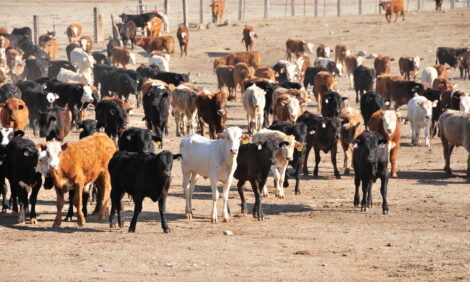



OIE Urges Stronger Animal Disease Surveillance Worldwide
GLOBAL - Among the lessons to be learned from the spread of highly pathogenic avian influenza H5N8 in Asia and Europe, the World Organisation for Animal Health is recommending a strengthening of animal disease surveillance worldwide.Following the recent spread of HPAI H5N8 virus in Asia and Europe, the OIE warns of the need to strengthen surveillance and early detection systems for diseases of domestic and wild animals throughout the world and recommends making this a major objective of official health policies.
Millions of poultry have already fallen victim to highly pathogenic avian influenza H5N8 in less than 11 months. This new strain appeared in the Republic of Korea in January before spreading in the People’s Republic of China and Japan, and recently in three countries of Europe, Germany, the Netherlands and the United Kingdom. Although the outbreaks of this new virus have so far been rapidly controlled by the sanitary authorities, there are important economic repercussions for the poultry sector.
In recent decades, the impact of the globalisation of movements of animals, people and commercial products has greatly increased the possibilities for pathogens to spread from one side of the world to the other in record time. Yet the recent discovery of virus H5N8 in Europe serves as a reminder to the international community that a simple natural phenomenon such as migratory movements of wild birds can also cause the worldwide dissemination of a disease.
To date, the H5N8 strain has not been linked to any cases in humans. Nevertheless, it is important to remain on the alert given the capacity of influenza viruses to mutate. With 75% of human emerging diseases being derived from pathogens transmitted by animals, whether domestic or wild, public health protection is inextricably linked to the preservation of animal health. Transmission of the Ebola virus from a wild animal to a human, followed by human-to-human transmission on a massive scale, is another tragically notorious example today.
In this context, the OIE issues a reminder that poor management of disease control at source in animals, irrespective of whether diseases are potentially transmissible to humans, can have consequences that are often severe for the local population and economy, and even at a regional and global level.
Speaking from experience, Director General of the Organisation, Dr Bernard Vallat [pictured above], said: “The crises of the last 20 years, such as those related to avian influenza H5N1 and H7N9, foot and mouth disease and 'mad cow disease', and now Ebola, show us that while it is true that the policies of combating diseases at their animal source are an expense for the budgets of individual States or the international community, the amount is derisory compared to the costs involved in dealing with a panzootic or a pandemic.”
The existence of competent, well-organised national Veterinary Services, irrespective of a country’s level of development, is a precondition for early detection of animal disease outbreaks and a rapid, transparent response. This is why, through its intergovernmental standards and its tools for improving the performance of the Veterinary Services, the OIE provides its 180 Member Countries with the necessary foundations for strengthening the governance of their animal health systems backed up by adequate human and financial resources, which also implies the existence of suitable legislation coupled with high level veterinary training.
In parallel, it is important to ensure extensive, optimal surveillance for animal diseases in wildlife as in domestic animals.
Dr Vallat added: “Animal producers, hunters, anglers and other users of the natural environment are also key players with whom it is important to cooperate and additional resources are also needed everywhere for the active search for pathogens in wild animals, including aquatic birds.”
At an international level, tools have been developed during the past ten years aimed at preventing panzootics and pandemics at their source in animals. The OIE PVS Pathway, a global programme to improve the performance of national Veterinary Services, the International Health Regulations developed by WHO and the OIE’s World Animal Health Information System, WAHIS, are excellent examples of this.
Dr Vallat added: “It is worth disseminating them and giving priority to ensure that they benefit developing countries, where the explosion of demand for animal protein will bring a profound change in livestock production in favour of more intensive systems, which will require stricter veterinary control. And we must do this quickly, as the pathogens will not wait.”
TheCattleSite News Desk


